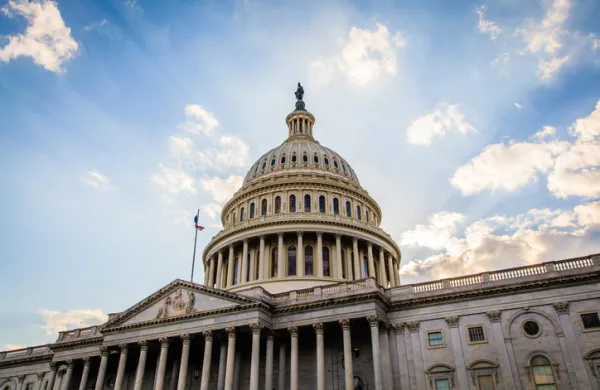Eight billion dollars.
That’s what Accenture has projected blockchain technology can cut from the biggest investment banks’ infrastructure costs. Given that its analysis is based on aggregated data from eight of the ten biggest banks (total cost base: $30 billion) — and with those billions potentially compounded across numerous other financial institutions and operations — it is little wonder the nascent blockchain industry is in full-on land-grab mode.
More than $1 billion in venture capital and other investment funds has gone into digital currency and blockchain, or distributed-ledger technology (DLT), startups. In capital markets alone, financial firms and technology providers are spending more than $1 billion annually on DLT initiatives, according to Greenwich Associates.
Vying for those dollars are a host of companies of different sizes and specialties. At stake are roles in reinventing clearing, compliance, reconciliation, and other inefficient processes, leading to a more modern and cost-effective industry infrastructure.
There are going to be winners and losers, but “it’s the first inning,” says Vikas Shah, who as managing director of investment banking at Rosenblatt Securities keeps a close eye on DLT and other fintech developments. “Considering the tens of billions in possible savings, [firms] can’t afford not to participate and try to get it right. That is why they are placing multiple bets.”
Indeed, the financial services DLT community marches to a collaborative beat. Many of the so-called use cases are reimaginings of back-office processes like those historically delegated to Depository Trust & Clearing Corp. An industry-owned utility that appears particularly ripe for DLT disruption, DTCC provides as good a lens as any through which to view DLT and the entities best equipped to bring it to fruition.
In January, DTCC announced it will move its Trade Information Warehouse, an important cog in credit derivatives market workflows, onto a DLT platform. It called in IBM as lead partner to manage the migration. DLT and smart-contract software is provided by Axoni. R3 CEV, a consortium of more than 70 financial institutions that are sharing DLT development costs, is playing an advisory role. And DTCC acknowledged “input and guidance” from banks including Credit Suisse and JPMorgan Chase & Co., as well as Intercontinental Exchange and information services company IHS Markit.
DTCC says a decision is due in June on whether to move another posttrade initiative, in the U.S. Treasury and Agency repo market, into full-scale development. The utility’s partner here is Digital Asset Holdings, the DLT company led by former JPMorgan executive Blythe Masters that is regarded as R3’s closest rival. DTCC is part of Digital Asset’s ownership group, which also includes Accenture, Goldman Sachs Group, IBM, JPMorgan, and the strategic investment arms of Spain’s Banco Santander, exchange operator CME Group, and London-based trading and technology firm NEX Group (formerly ICAP).
Those lineups illustrate how alliances, consortia, and partnerships — with overlapping connections and fluid loyalties — are ushering DLT into finance. Market participants are not only linking arms with Digital Asset and R3. They are also joining standards-promoting bodies such as the Linux Foundation’s Hyperledger Project (Accenture, CME, Digital Asset, DTCC, IBM, JPMorgan, and R3 have premier membership status) and the Enterprise Ethereum Alliance (Accenture, CME, Credit Suisse, JPMorgan, Microsoft, and Santander, among others).
The idea is that in areas where competition would be counterproductive, standards will foster innovation in much the same way Internet protocols enabled e-business to flourish.
“There is a level of standardization that benefits everybody,” Digital Asset chief business development officer Chris Church said at the DTCC Fintech Symposium in early March in New York. He acknowledged that standards-writing can be tedious, but added, “The prize is so big, we’d be missing a great opportunity.”
It will be well and good if all this collaborating delivers “the biggest benefit to the largest number of users,” which DTCC president and CEO Michael Bodson cited as a key objective. But that doesn’t imply any stifling of competitive juices.
Besides Digital Asset and R3, the field is crowded with the likes of IBM, Overstock.com’s t0 trading and settlement platform, and software companies such as AlphaPoint, Axoni, and Chain, which is closely allied with Nasdaq.
R3 had a project management role in a significant DLT demonstration last year — a Credit Suisse–led proof-of-concept for syndicated loans processing. The DLT component came from Symbiont, the smart-securities company Caitlin Long joined last summer as chair and president. The former Morgan Stanley managing director blogged that she was drawn to Symbiont because it has “the best technology platform for financial sector uses.”
“The differentiator in this business is whether the tech works,” Long tells Institutional Investor. “There is a tendency to press release at the beginning of projects. Many announced projects have actually failed.”
Symbiont is working on an extensive corporate-records DLT initiative with the state of Delaware, and in March it introduced a platform with Orebits Corp. for digitized trading of unrefined gold.
Score those few for Symbiont in a battle that is only beginning to heat up.






